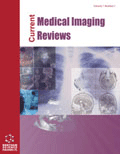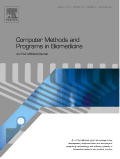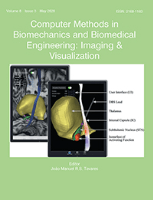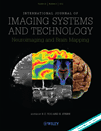
MEDICAL IMAGE ANALYSIS
Scope & Guideline
Transforming Health Through Innovative Imaging Solutions.
Introduction
Aims and Scopes
- Medical Image Segmentation:
A core focus of the journal is on the development of novel algorithms for segmenting anatomical structures and pathological regions in medical images, utilizing deep learning, traditional image processing methods, and hybrid approaches. - Integration of Machine Learning:
The journal emphasizes the integration of machine learning techniques, particularly deep learning, for various tasks in medical image analysis, including classification, detection, and segmentation. - Cross-Modal Imaging and Data Fusion:
Research exploring the fusion of information from different imaging modalities (e.g., MRI, CT, PET) to enhance diagnostic capabilities and improve clinical outcomes is prominently featured. - Uncertainty Quantification and Robustness:
Addressing the reliability of medical image analysis methods through uncertainty quantification, robustness evaluation, and the development of methods that are resilient to variations in data is a significant theme. - Clinical Applications and Challenges:
The journal includes studies that focus on real-world clinical applications of image analysis techniques, addressing challenges faced in diverse medical fields such as oncology, cardiology, and neurology. - Generative Models and Synthetic Data:
Research on generative models for creating synthetic medical images and augmenting training datasets is becoming increasingly important, allowing for improved model training and evaluation. - Federated Learning and Collaborative Approaches:
With the growing complexity of medical data and privacy concerns, the journal highlights the need for federated learning frameworks that enable collaborative model training across institutions without sharing sensitive data.
Trending and Emerging
- Transformers in Medical Imaging:
The use of transformer architectures is on the rise, with studies exploring their application in various tasks such as segmentation, classification, and image reconstruction, demonstrating their effectiveness over traditional CNNs. - Explainable AI and Interpretability:
There is a growing emphasis on developing explainable AI methods, particularly in medical image analysis, to enhance trust and understanding of model predictions among clinicians. - Active Learning and Semi-Supervised Techniques:
Active learning approaches, along with semi-supervised methods, are emerging as important strategies to reduce the reliance on large labeled datasets, which can be time-consuming and expensive to produce. - Uncertainty-Aware Learning:
Research focusing on incorporating uncertainty quantification into model predictions is gaining traction, as it helps in assessing the reliability of diagnostic outcomes. - Augmented Reality and Imaging Techniques:
The integration of augmented reality (AR) with imaging techniques is becoming more prominent, particularly in surgical planning and navigation, enhancing the visualization of complex anatomical structures. - Federated Learning Approaches:
The adoption of federated learning frameworks is increasing, facilitating collaborative research while maintaining patient data privacy, allowing institutions to leverage shared knowledge without compromising sensitive information. - Generative Adversarial Networks (GANs):
The use of GANs for tasks such as image synthesis, data augmentation, and the improvement of image quality is an emerging trend, reflecting the demand for high-quality training data in deep learning applications.
Declining or Waning
- Traditional Image Processing Techniques:
There has been a noticeable shift away from classical image processing methods in favor of deep learning-based approaches. Papers utilizing older algorithms are becoming less frequent as the field moves towards more sophisticated, data-driven techniques. - Single-Modality Focus:
Research focusing exclusively on single imaging modalities is declining as the trend shifts towards multi-modal approaches that leverage the strengths of various imaging techniques. - Basic Statistical Methods:
The application of basic statistical methods for image analysis is increasingly being replaced by more complex machine learning models, as researchers seek to enhance predictive accuracy and robustness. - Manual Annotation Techniques:
There is a significant reduction in studies centered around manual annotation methods for training machine learning models, as automated and semi-automated annotation techniques gain traction. - General Reviews Without Novel Contributions:
The journal is moving away from general review articles that do not provide novel insights or advancements in the field, favoring original research that contributes new methodologies or findings.
Similar Journals

IEEE Journal of Biomedical and Health Informatics
Advancing the Intersection of Technology and HealthcareIEEE Journal of Biomedical and Health Informatics is a premier publication dedicated to advancing the field of biomedical and health informatics. Published by the esteemed IEEE-Inst Electrical Electronics Engineers Inc, this journal boasts a notable impact within various disciplines, ranking in the top quartile (Q1) across key categories such as Biotechnology, Computer Science Applications, Electrical and Electronic Engineering, Health Informatics, and Health Information Management as of 2023. With a strong Scopus ranking—placing it at #11 in Health Informatics and #6 in Health Information Management—it serves as a vital resource for cutting-edge research and innovative practices. Open Access options enhance accessibility, fostering collaboration among researchers, professionals, and students. Since its inception in 2013, the journal has been committed to publishing high-quality, peer-reviewed articles that explore the pivotal intersection between technology and healthcare, thereby contributing significantly to the evolution of medical practices and patient care.

Current Medical Imaging
Elevating Standards in Radiology and Internal MedicineCurrent Medical Imaging is a reputable journal published by Bentham Science Publishers, specializing in the dynamic field of medical imaging, with a strong emphasis on both clinical applications and technological advancements. Established in 2007, the journal has made significant contributions to the fields of Internal Medicine and Radiology, consistently ranking in the Q3 quartile for these categories as of 2023. The journal's ISSN 1573-4056 and E-ISSN 1875-6603 ensure wide accessibility for scholarly communication, although it operates under a traditional access model. With its continuous publication from 2011 to 2024, Current Medical Imaging aims to bridge the gap between advanced imaging techniques and their practical application in patient care, making it indispensable for researchers, healthcare professionals, and students eager to stay at the forefront of innovations in imaging technology and clinical practice.

COMPUTERIZED MEDICAL IMAGING AND GRAPHICS
Advancing the Frontiers of Medical Imaging and GraphicsCOMPUTERIZED MEDICAL IMAGING AND GRAPHICS, published by PERGAMON-ELSEVIER SCIENCE LTD, is a leading international journal that has significantly contributed to the fields of medical imaging, graphics, and informatics since its establishment in 1988. With a remarkable reputation reflected in its Q1 quartile rankings across multiple categories—including Computer Graphics, Health Informatics, and Radiology—this journal maintains a prominent position in the academic community, evidenced by its Scopus rankings where it ranks in the top percentile across various disciplines. The journal aims to advance knowledge and innovation within the intersection of technology and healthcare, featuring high-quality research that addresses contemporary challenges in medical imaging and graphical methodologies. With no open access options currently available, this journal serves as a crucial resource for researchers, professionals, and students who are at the forefront of advancing imaging technology and its applications in medicine.

Computer Methods and Programs in Biomedicine
Revolutionizing Health Informatics with State-of-the-Art Programs.Computer Methods and Programs in Biomedicine, published by ELSEVIER IRELAND LTD, is a leading journal at the intersection of computer science and biomedical research. With an impressive impact factor evidenced by its Q1 rankings in multiple categories—Computer Science Applications, Health Informatics, and Software—this journal ranks highly among peer publications, showcasing its significance in advancing interdisciplinary research. Covering a wide array of topics since its inception in 1985, it is particularly crucial for those invested in the innovation of computational methods applied to the biomedical field. The journal has established a strong reputation, with Scopus rankings placing it in the top percentiles across its relevant sectors, including the 14th position out of 138 in Health Informatics. Researchers, practitioners, and students looking to explore current trends, methodologies, and advancements in biomedical applications of computer science will find this journal an invaluable resource.

Computer Methods in Biomechanics and Biomedical Engineering-Imaging and Visualization
Empowering Biomedical Innovations with Computational MethodsComputer Methods in Biomechanics and Biomedical Engineering - Imaging and Visualization is a prominent academic journal published by Taylor & Francis Ltd, dedicated to the intersection of computational methods and biomedical engineering. With an ISSN of 2168-1163 and an E-ISSN of 2168-1171, the journal has become a crucial resource for researchers and professionals exploring innovative imaging and visualization techniques in healthcare. Covering a broad spectrum of topics, it aims to facilitate the advancement of knowledge in areas such as biomechanics, computational mechanics, and medical imaging. Holding a strong position in various Scopus rankings, including Q2 in Computational Mechanics, it offers valuable insights that foster interdisciplinary collaboration. Although it is not an open-access journal, researchers can access its rich repository of knowledge, which is instrumental in shaping future advancements in biomedical applications. The journal’s commitment to quality and relevance ensures that it remains an authoritative source for emerging trends and methodologies within the field, serving as a vital tool for academia and industry practitioners alike.

INTERNATIONAL JOURNAL OF IMAGING SYSTEMS AND TECHNOLOGY
Unveiling the Future of Imaging TechnologiesINTERNATIONAL JOURNAL OF IMAGING SYSTEMS AND TECHNOLOGY, published by Wiley, is a leading journal dedicated to advancing the field of imaging systems and technologies. With an ISSN of 0899-9457 and E-ISSN 1098-1098, this esteemed journal offers a platform for high-quality research spanning essential interdisciplinary areas, including Biomedical Engineering, Computer Science, and Health Informatics. Recognized for its impactful contributions, it holds a commendable position in the Q2 quartile across multiple categories as of 2023. The journal boasts an excellent Scopus ranking, with notable acknowledgments like rank #49 out of 333 in Radiology, Nuclear Medicine, and Imaging, showcasing its relevance and importance in the academic community. Publishes annually from 1989 to 2024, it aims to bridge gaps in knowledge and foster innovative developments through rigorous peer-reviewed articles. Though it operates under a traditional access model, the journal maintains an accessible repository of cutting-edge research, making it indispensable for researchers, professionals, and students alike seeking to stay at the forefront of imaging technology advancements.

Quantitative Imaging in Medicine and Surgery
Unlocking the Future of Imaging in Medicine and SurgeryQuantitative Imaging in Medicine and Surgery is an esteemed journal dedicated to advancing the field of medical imaging through rigorous research and innovative methodologies. Published by AME PUBLISHING COMPANY in China, this journal has established itself with an impressive Q2 quartile ranking in the field of Radiology, Nuclear Medicine, and Imaging, reflecting its dedication to high-quality research. With a comprehensive focus on quantitative imaging techniques, the journal covers a wide range of topics including image analysis, imaging biomarkers, and the integration of imaging in clinical practice, promoting collaboration between imaging specialists and clinicians. As an open access journal, Quantitative Imaging in Medicine and Surgery ensures that its articles are freely accessible, facilitating the dissemination of knowledge to a broader audience. With a commitment to fostering innovation in imaging science, this journal serves as an invaluable resource for researchers, professionals, and students alike, ultimately aiming to improve patient outcomes through advanced imaging strategies and technologies.

International Journal of Image and Graphics
Fostering Creativity Through Cutting-Edge Graphics ResearchInternational Journal of Image and Graphics, published by World Scientific Publishing Co. Pte Ltd, serves as an essential platform for scholars and practitioners in the realms of Computer Graphics, Computer-Aided Design, and Computer Vision and Pattern Recognition. Established in 2001 and based in Singapore, this journal has become increasingly influential, with a reputation reflected in its Q3 and Q4 rankings across key categories in Scopus, highlighting its growing impact in the academic community. Open access options remain limited; however, the journal's commitment to disseminating high-quality research allows for a rich exchange of ideas among professionals and students alike. As the 2023 metrics indicate, contributions to the journal not only enhance individual academic portfolios but also promote advancements in image processing, fostering innovation and growth within the discipline until at least 2024. It is thus a vital resource for anyone looking to deepen their knowledge and understanding of contemporary trends and technologies in image processing and related fields.

Signal Image and Video Processing
Pioneering Research in Image and Video ProcessingSignal Image and Video Processing, published by Springer London Ltd, is a cutting-edge academic journal dedicated to the fields of electrical and electronic engineering and signal processing. With an ISSN of 1863-1703 and an E-ISSN of 1863-1711, this journal plays a pivotal role in disseminating innovative research findings from 2007 to 2024, boasting a commendable Q2 ranking in its respective categories. Located in the United Kingdom, the journal attracts a diverse readership of researchers, professionals, and students eager to explore advancements in signal processing technologies and their applications in imaging and video analysis. Although it does not offer open access, its rigorous peer-review process ensures the publication of high-quality, impactful research, evident by its respectable rankings within Scopus in both electrical engineering and computer science domains. The journal serves as vital resource for those aiming to stay at the forefront of technological developments and research in image and video processing.

Journal of Imaging
Exploring New Frontiers in Imaging ResearchThe Journal of Imaging, published by MDPI, is an esteemed open-access journal dedicated to advancing the fields of Computer Graphics, Computer Vision, and Electrical Engineering. Since its inception in 2015, this journal has established a significant presence in the academic community, reflected by its impressive rankings in Scopus, including a Q2 quartile in multiple categories such as Computer Vision and Pattern Recognition and Radiology. With a commitment to disseminating high-quality research, the journal offers a platform for innovative studies and practical applications, making it an essential resource for researchers, professionals, and students alike. Operating from its base in Basel, Switzerland, the journal continues to promote scholarly work that pushes the boundaries of imaging technologies, while contributing to the global discourse in its respective fields. The open-access model ensures that valuable research is readily available, fostering collaboration and knowledge-sharing across disciplines.